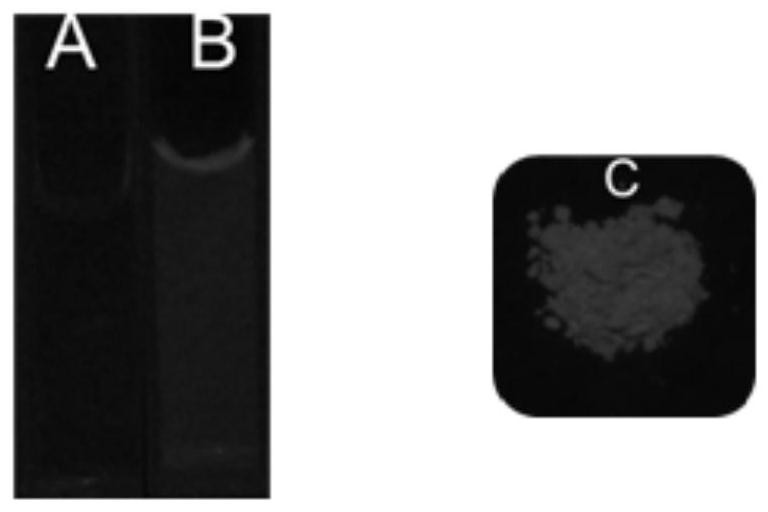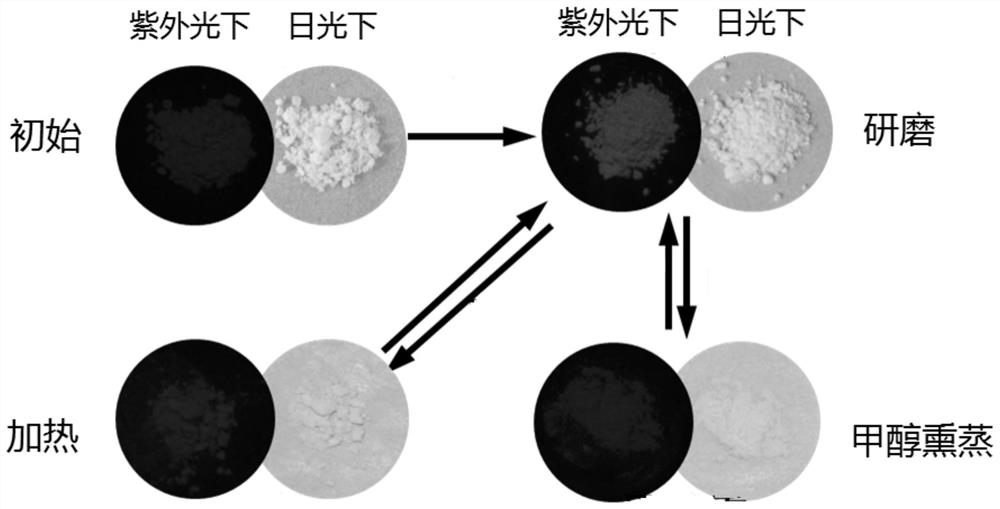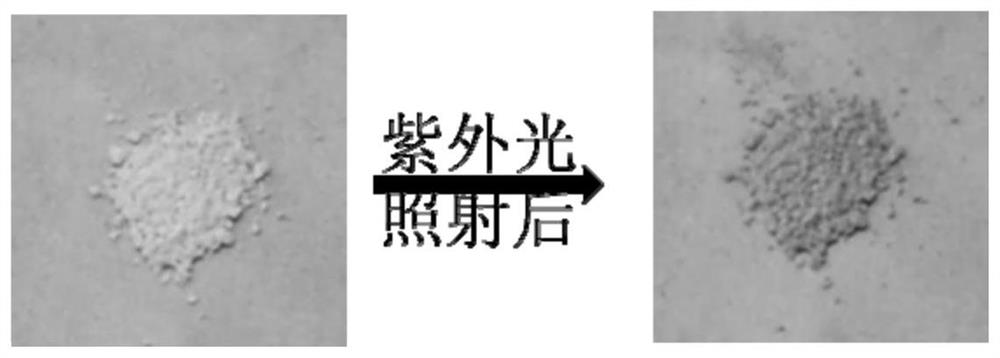Multi-stimulus-response color-changing material and preparation method and application thereof
A technology of multiple stimulus-responsive and color-changing materials, applied in the field of intelligent fluorescent materials, can solve the problems of fluorescence quenching and single color-changing materials, and achieve the effects of fast response speed, simple synthesis route and high yield
- Summary
- Abstract
- Description
- Claims
- Application Information
AI Technical Summary
Problems solved by technology
Method used
Image
Examples
preparation example Construction
[0039] Based on the above technical solution, the embodiment of the present application also provides a method for preparing the above-mentioned multi-stimuli-responsive color-changing material, including the following steps:
[0040] S01, provide compound A as shown in formula a and compound B as shown in formula b, wherein, X is selected as halogen, and R is selected as OH, COOH, CHO or COOCH 3 , R' is selected as boric acid group or borate ester group;
[0041]
[0042] S02. The compound A and the compound B are subjected to a Suzuki coupling reaction to synthesize a multi-stimuli-responsive color-changing material having the following general formula:
[0043]
[0044] Specifically, in step S01, compound A provides tetrastyryl skeleton precursors for the synthesis of multiple stimuli-responsive color-changing materials, and its chemical structure is shown in formula a:
[0045] Wherein, X is selected as halogen.
[0046] Wherein, halogen includes but not limited ...
Embodiment 1
[0058] This embodiment synthesized following compound:
[0059]
[0060] The concrete synthetic method of this compound comprises:
[0061] 1-Bromo-2,2-bis(4-methoxybenzene)-1-styrene (710 mg, 1.80 mmol), 3-hydroxyphenylboronic acid (372 mg, 2.69 mmol) and 40 mg tetrakis(triphenylphosphine) Palladium was placed in a 100mL two-necked round-bottomed flask to remove oxygen from the system, and then 6mL of K 2 CO 3 (1.656g, 12.00mmol) aqueous solution and 25mL of deoxygenated tetrahydrofuran were injected into a round-bottomed flask, and refluxed for 20 hours under nitrogen protection. Cool to room temperature after the reaction, add 100 mL of water, extract with dichloromethane (50 mL×3), combine the organic phases, then dry the organic phases with anhydrous sodium sulfate, filter, and rotary evaporate under reduced pressure to obtain the crude product. The crude product was purified by silica gel column chromatography using petroleum ether and ethyl acetate as eluents to f...
PUM
 Login to View More
Login to View More Abstract
Description
Claims
Application Information
 Login to View More
Login to View More - R&D
- Intellectual Property
- Life Sciences
- Materials
- Tech Scout
- Unparalleled Data Quality
- Higher Quality Content
- 60% Fewer Hallucinations
Browse by: Latest US Patents, China's latest patents, Technical Efficacy Thesaurus, Application Domain, Technology Topic, Popular Technical Reports.
© 2025 PatSnap. All rights reserved.Legal|Privacy policy|Modern Slavery Act Transparency Statement|Sitemap|About US| Contact US: help@patsnap.com



